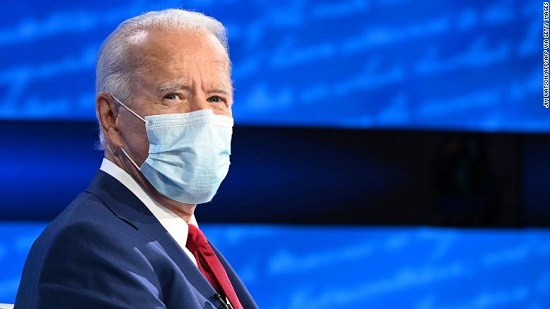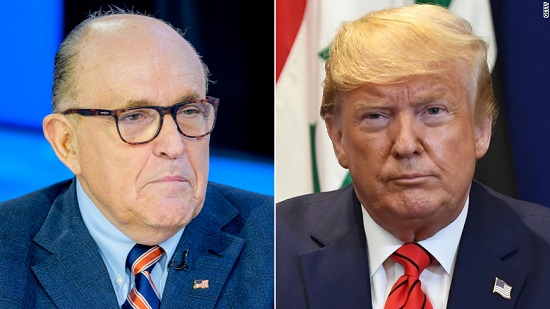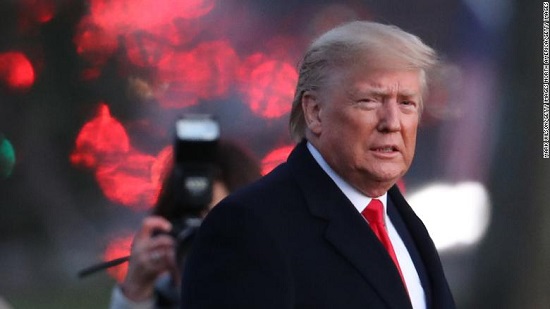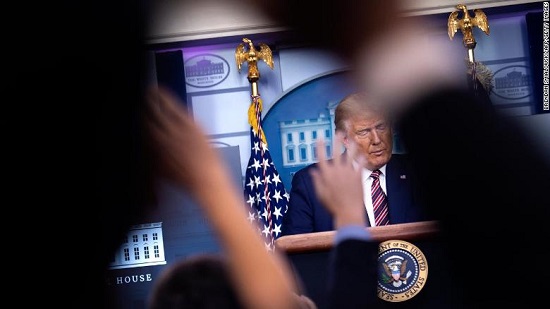How Donald Trump could win the presidency -- and have Kamala Harris as his VP
The United States has faced an extraordinary set of challenges in 2020. Foreign election interference, an impeachment trial, a global health pandemic, natural disasters, economic instability, mass protests and civil unrest have plagued the country.
Against this backdrop, President Donald Trump has intensified his rhetoric undermining the electoral process, stating that "the only way we re going to lose this election is if this election is rigged." Add a dose of intense political polarization and a potentially close election and we have a recipe for yet another disaster before the end of the year.
No wonder a majority of Americans do not have confidence the election will be conducted fairly, according to recent polling from NBC/Survey Monkey.Although former Vice President Joe Biden continues to lead in the polls, slightly more voters believe that President Trump will win a second term, according to Gallup poll data published in August. Memories of Trump s surprise victory over former Secretary of State Hillary Clinton are undoubtedly on the minds of many voters.
Trump s 2016 victory reminded many Americans that the Electoral College process, not the overall popular vote, determines who wins or loses a presidential election. Although Clinton garnered nearly three million more votes than Trump, he was able to claim slim margins of victory in Wisconsin, Michigan and Pennsylvania, which was enough to obtain an Electoral College majority.
If fewer than 40,000 voters in those states (just 0.0028% of all votes cast among these states) had changed their minds, Hillary Clinton would have won the presidency. Given that as many as 13% made their minds up the day of the election or planned to vote for a third-party candidate, such a scenario is not farfetched.
This underscores just how close the election was. In reality, most presidential elections are close. In fact, half of all elections have come down to a change in 75,000 votes or less scattered across the country; 40% of elections have come down to a change in 30,000 votes or less; and one-in-five elections have come down to a change in just 10,000 votes or less. Consider that in any election, around 4% of voters make their mind up the day of the election and one can see how many presidential outcomes could have turned out quite differently.
Close elections are the rule, not the exception.
As bizarre as this election cycle has been, we should consider a scenario that, while unlikely, is one we should be prepared to encounter, especially in the current environment of distrust and polarization: an electoral vote tie. The only tie in the Electoral College occurred in 1800, after which the 12th Amendment was added to the Constitution.
The tie arose from the unforeseen establishment of party tickets. Originally, electors cast two votes and did not distinguish between a presidential and a vice presidential candidate. In 1800, electors supporting Thomas Jefferson and Aaron Burr cast one ballot for each of them, resulting in a tie. Consequently, the winner was decided by the House of Representatives in our first contingent election. The 12th Amendment was adopted prior to the 1804 election and it required electors to cast one vote for president and one vote for vice president.
Close observers of presidential elections recognize that there have been many cases where a tie was narrowly averted. Based on election data, we estimate that the US has been within a hairbreadth of an Electoral College tie in over 20% of the last 18 presidential elections.It does not take much imagination to envision a map where a tie could happen this November, and given the current state of affairs, the country is ill-prepared for such an occurrence. A quick glance at the electoral map shows that if everything remains the same as 2016 with the exception of Michigan, Wisconsin and Arizona going blue, the result would be a 269-269 tie.
Alternatively, if the parties were to claim the exact same states as four years ago, but Biden wins the states of Michigan, Pennsylvania and the one electoral vote of Nebraska s Second Congressional District, the 2020 election would also end in a deadlock. It would also be the first election settled by the US Congress since the election of 1876. Although this is a remote possibility, it is useful -- and quite unsettling -- to examine what would likely happen next.
When Americans vote for the presidential and vice presidential candidate of their choice, either by mail or in-person, this November, they will actually be casting a vote for a slate of electors, equal to the number of a state s electoral votes, who will cast a vote on their behalf in their respective state capitals on December 14.
This process hinges on presidential electors remaining faithful to their pledged candidates. The Supreme Court sought to avoid chaos caused by so-called "faithless electors" (electors who do not cast their electoral vote for the candidate to whom they are pledged) in their ruling earlier this summer in Chiafalo v. Washington. The Court found that states that had "binding laws" that either punished or removed electors who did not vote as anticipated were indeed constitutional. For many, this was heralded as the end of faithless electors.
However, while 33 states and the District of Columbia require pledges of electors, only 14 states have consequences which actually result in the removal of a faithless elector. These 14 states account for just 121 electoral votes, meaning that there is no legal means to bind the remaining 417 electoral votes. Research on electors finds that a surprisingly large number often consider casting rogue votes and an Electoral College tie could create great incentives for them to do so. Although few go rogue, a record number cast faithless votes in 2016, including five Democratic and two Republican electors.
In the event of an Electoral College tie between Biden and Trump, a faithless elector could decide to vote for the other candidate, thus giving that candidate 270 electoral votes and potentially ending the election in a wave of controversy. However, on January 6 in a joint session of Congress, all electoral votes received from the states are read aloud and tabulated. At that point, it is likely that the faithless vote would be challenged and debated among members of Congress.
Notably, all previous faithless votes have been counted by Congress in the manner they were received. The Court s ruling in Chiafalo could provide support to nullify a rogue vote if one were cast, but that outcome is uncertain.Supposing all electors vote as expected and no candidate receives a majority of Electoral College votes, the election would move to the contingency process, which has been utilized three times in American history, all in the 19th century.
In a contingent election, the House of Representatives is charged with determining the winner of the presidency while the Senate selects the vice president. Potentially adding further intrigue, there is also nothing in the Constitution requiring members of the House or Senate to hold their deliberations or cast their votes in public. During the 1825 contingent election, votes were cast in secret.
In the House, members must choose among the top three candidates who won electoral votes for the presidency. Each state delegation gets one vote, regardless of the size of their delegation. This process emphasizes the power of statehood and small states have as much say regarding the next president as the most populated ones. Thus, Wyoming (population, 580,000) and California (population, 40 million) have equal clout in this process.
Currently, 26 state U.S. House delegations are majority Republican, 23 states are majority Democrat, and 1 state has divided party control. We won t know until after Election Day, and perhaps considerably long after, how many state House delegations are controlled by which parties in the incoming 117th Congress. If delegation control were to remain unchanged, it may well be that Joe Biden could win the popular vote by millions and have the House controlled by his own party only to lose the presidency because Republicans controlled more House delegations.
While this all may seem far-fetched, Donald Trump has floated the idea that he could win the presidency in a contingent election. In response, Speaker of the House Nancy Pelosi urged her fellow Democratic members of the House to redouble their efforts to ensure Democrats win a majority of House delegations. Clearly, scenarios of this sort are on the minds of our nation s leaders.
The choice of the vice president falls to the Senate and each senator would have a single vote. Senators would choose among the top two candidates who won electoral votes for the vice presidency. While Republicans may hold on to their majority in the Senate, it is quite possible that Democrats could have a slim majority in the 117th Congress. Thus, in a contingency scenario, it is entirely possible that Donald Trump could win reelection and Kamala Harris would be his vice president.And if that is not bizarre enough, if the House is unable to agree on a winner by January 20, 2021, at noon, the vice president would become acting president provided the Senate could agree on a vice president. If neither body can decide on a winner by the January 20 deadline, the Presidential Succession Act would kick in and Pelosi, once she resigned her seat in Congress, would act as president until the election were finally resolved.
Though this outcome may appear improbable, if 2020 has taught us anything, it is to expect the unexpected and prepare for any and all scenarios. Should an electoral vote tie occur, we believe that America, and the world, will not be prepared for the bedlam which would ensue.






















